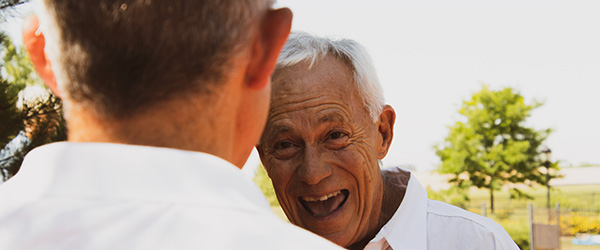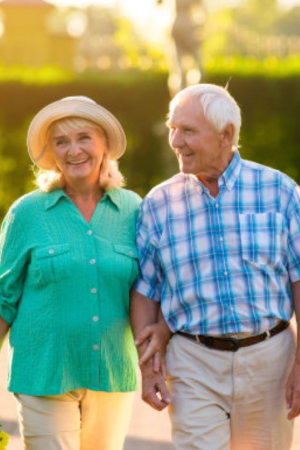
It could be argued that no widespread experience has shed greater light on the universal need for face-to-face contact and personal connection than the global pandemic.Amidst this seismic threat to public health, people around the world have been rattled by overwhelming fear, stress and social isolation.For many, this reality has been accompanied by an unmistakable appreciation and longing for the kind of interaction that used to mark our everyday lives before the onset of COVID.
Truthfully, though, science has been highlighting the significance of human contact for quite some timelong before the pandemic reared its ugly head.Mental and emotional health experts have emphasized the benefits of socialization, supported by strong evidence that this kind of human connection is linked to greater overall health as well as a longer lifespan.The research is an eye-opening statement on why and how community living can have an immensely positive impact on the life of a senior.
Here, were explaining the relationship between longevity and community living.Lets start with an introduction to an interesting concept called The Village Effect.What Is The Village Effect?In 2014, developmental psychologist Susan Pinker authored The Village Effect: How Face-to-Face Contact Can Make Us Healthier, Happier, and Smarter.Her research and studies in social neuroscience show a critical link between face-to-face contact and the ability to learn, find happiness, be resilient and live a long life.
The book illustrates how human beings are hardwired to connect with other human beings, whether that connection comes in the form of close personal relationships or simple social bonds.All of these in-person touch points come together to form a personal village of family, friends and community, one we desperately need in order to thrive and survive.Consider some of the following statistics: The type of social contact in which a person engages influences their physical resilience, e.g., their likelihood of catching colds and how long those colds last, how well their body fights infections and even how fast malignant tumors grow.
A prospective study of 4,000 women with breast cancer, which looked at every aspect of their lifestyles, showed that the greatest predictor of survival over a 10-year period was the size of their in-person social networks.People with active, in-person social lives have a 2- to 15-year lifespan advantage.Social contact is an even more powerful predictor of health and longevity than physical exercise or even whether or not a person smokes.
Social contact is a hugely powerful biological indicator of how well people can think, remember facts and mitigate brain ailments such as dementia.In almost all developed nations around the world, women live longer than men by an average of 5-7 years, and a major reason why is because women have much more extensive social lives.There is one place in the world where men live as long as women, and its a remote, mountainous area of Sardinia, an island off the southern coast of Italy.It is referred to as a Blue Zone, or a region where a higher-than-usual number of people live much longer than average.
There are ten times more centenarians living in Sardinia than there are in Europe and the United States, and six times more than in the mainland of Italy.Susan Pinkers visit to this village in Sardinia and her related studies brought to light the incredible impact that living in such a close-knit community has had on the health and longevity of the seniors there.The Connection Between Loneliness & MortalityA 2015 analysis of 70 different research studies, involving a total of 3.4 million people at an average age of 66 years old at the start of each study, reveals that actual and perceived social isolation are both associated with increased risk for early mortality.The analytical review identified that: People who reported being lonely were 26% more likely to have died (over an average of seven years) than those who did not.
Mortality risk was 20% higher for those who were socially isolated than for those who were not.Mortality risk was 32% higher for people who lived alone versus those who did not.The negative effect on longevity was the same for all people who were lonely, whether they were actually alone or they merely felt alone.
These numbers paint an important picture of the reality facing seniors who spend their time being or feeling alone, and its a problem that becomes increasingly prevalent as cultural norms move further and further away from the reliance on close-knit bonds of family, friends and community.So, whats the answer?The Value of Community LivingQuite simply, the answer is human connectionand a lot of it.For seniors, staying social and active in the community can be a challenge, especially because their years of working, raising children, coaching teams or participating in other group-related pastimes are behind them.But that doesnt mean they have to spend their golden years alone, or feeling lonely.Senior living communities offer the opportunity to build new relationships every daywith staff, fellow residents and even volunteers.
In addition to the increased potential for conversation and camaraderie, there are lots of meaningful activities and events scheduled or available at your convenience.Think group hobbies like exercise classes, book clubs and cooking courses.A senior living community focused on relationship-centered care understands that what makes a place a home is the family who gathers there.
At these types of communities, the team members work hard to create a warm family atmosphere, and they understand the challenges faced by families caring for older adults.By fostering compassionate relationships, the staff plays an essential role in helping residents navigate the journey of aging and feel part of a valuable community.Consider visiting these types of living communities in your area, and think about whether this option might be a good fit for you or the senior in your life.Interested in learning how United Methodist Homes senior living community provides a wealth of offerings and opportunities to support the health and wellbeing of our residents?
Disclaimer: This story is auto-aggregated by a computer program and has not been created or edited by Senior Savings Deals.
Publisher: Assisted & Independent ( Read More )
Publisher: Assisted & Independent ( Read More )

